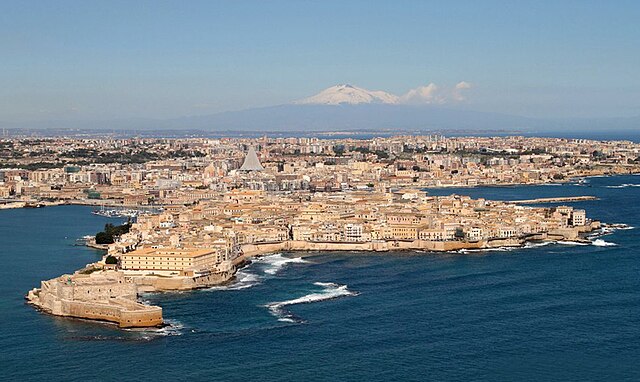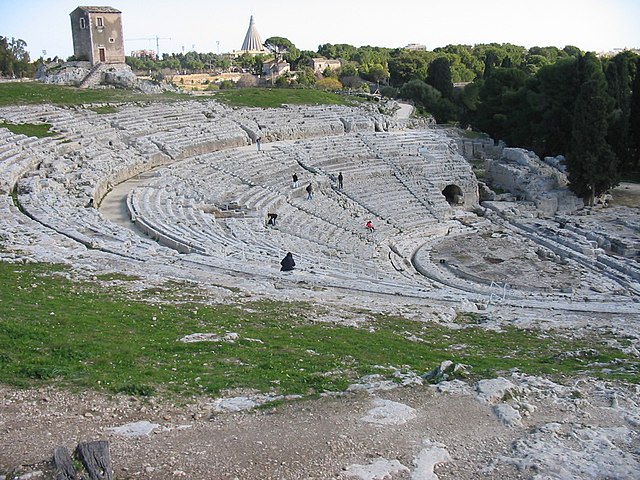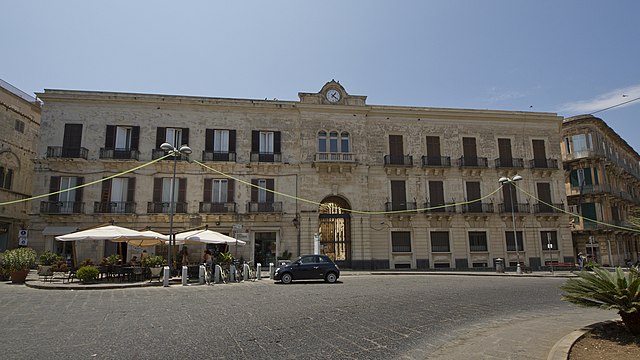Siege of Syracuse (877–878)
The siege of Syracuse from 877 to 878 led to the fall of the city of Syracuse, the Byzantine capital of Sicily, to the Aghlabids. The siege lasted from August 877 to 21 May 878 when the city, effectively left without assistance by the central Byzantine government, was sacked by the Aghlabid forces.
The capture of Syracuse, miniature from the Madrid Skylitzes
Admiral Adrianos is informed of the fall of Syracuse by demons. Miniature from the Madrid Skylitzes.
Syracuse is a historic city on the Italian island of Sicily, the capital of the Italian province of Syracuse. The city is notable for its rich Greek and Roman history, culture, amphitheatres, architecture, and as the birthplace and home of the pre-eminent mathematician and engineer Archimedes. This 2,700-year-old city played a key role in ancient times, when it was one of the major powers of the Mediterranean world. Syracuse is located in the southeast corner of the island of Sicily, next to the Gulf of Syracuse beside the Ionian Sea. It is situated in a drastic rise of land with 2,000 metres (6,600 ft) depths being close to the city offshore although the city itself is generally not so hilly in comparison.
The Greek theatre of Syracuse
Image: Veduta aerea di Siracusa e con l'Etna sullo sfondo (Foto di Angelo Bonomo)
Image: Theatre at Syracuse, Sicily
Image: Palazzo dell'orologio, Ortygia, Syracuse, Province of Syracuse, Sicily, Italy panoramio






